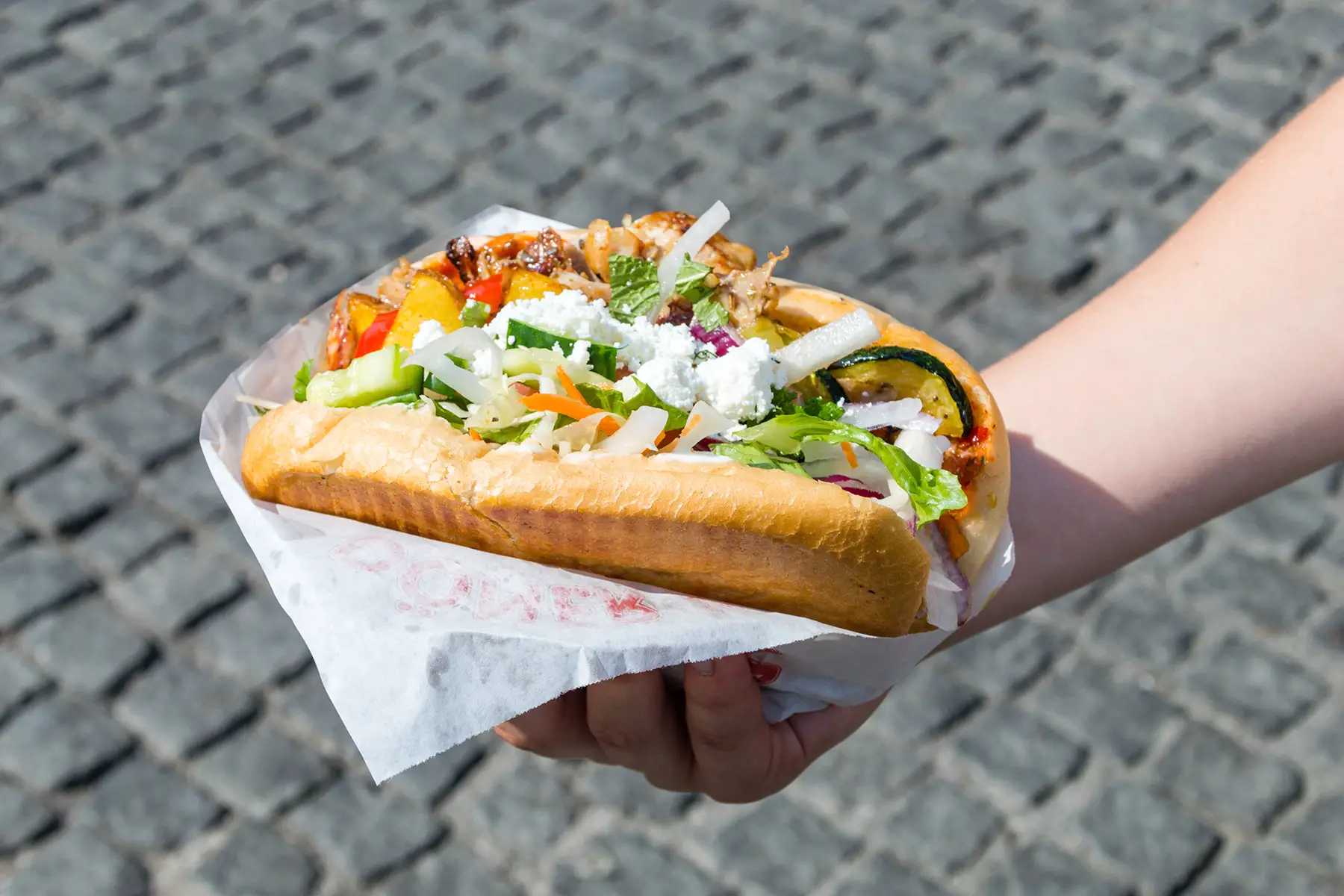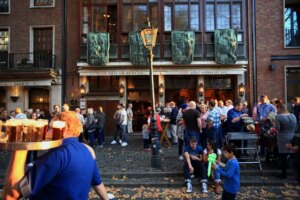German cuisine is brimming with iconic dishes. Whether it’s Bratwurst, pretzels, or world-class German beer, the country has an impressive culinary scene. One of the most popular foods, however, remains the döner kebab. A flatbread with rotisserie-cut meat and vegetables, döner is a quintessential German food. But how did this originally Turkish meal make its way to Berlin and earn the legacy it has today?
Before you go and buy one for yourself, read on to learn how the döner kebab has taken Germany by storm:
Allianz Travel
If you’re planning to travel, make sure you’re covered for costs of cancellation and other interruptions with Allianz Travel. They offer a range of products, including travel insurance, incoming health insurance, and rental vehicle insurance. With 24/7 emergency contact available, Allianz Travel are there wherever you need them.
What is döner kebab in Germany?
The first appearance of the popular snack was in the Ottoman Empire, back in the 17th century. Originally, seasoned meat was pierced onto a horizontal spit which was rotated atop a flame. This is where the famous name comes from: ‘döner’ means ‘to turn around’ in Turkish.
The spit went from horizontal to vertical in Bursa in modern-day Türkiye around the 1850s, a change that was highly successful. The method was used to serve İskender kebap. İskender is a dish of thinly sliced lean lamb topped with tomato sauce served over pieces of bread. This is then drizzled with yogurt and butter on top.

You can still order İskender today in Germany. Many servers drizzle the tomato sauce on the kebab in front of the customer for their entertainment.
Due to its success, the new vertical method to make İskender kebab began to spread across Türkiye’s borders. It made its way across the Middle East and developed into the popular shawarma (meat roasted on a cone-shaped spit and cut into thin slices). Additionally, with the population exchange between Greece and Türkiye in 1923, the idea also found its way to Greece and inspired today’s gyros (sliced meat cut from a rotisserie in pita bread).
When the döner came to Germany
The döner eventually found its way to Germany in the 1960s, where it traveled along with migrant workers to Berlin. Italians, Greeks, Spaniards, Moroccans, and of course, Turkish people came to Germany to remedy Germany’s worker shortage. Turkish men came in large numbers and their families also followed.
Once in Berlin, İskender enthusiasts wanted to give their fellow Turkish workers a slice of home. This time, the kebab was prepared in a more portable form. This took the form of a flatbread filled with marinated meat, abundant salad (salat komplett), and sauce – the classic döner known today.
The first person to take to the German streets to sell döner kebabs remains a debated issue. On one hand, Kadir Nurman is thought to be the mastermind behind döner in Germany. A guest worker from Türkiye, Nurman served kebabs from his stand near Bahnhof Zoo in the early 1970s. On the other hand, Mehmet Agyun, another Turkish cook living in Germany, is credited with being the first person to sell İskender kebab in flatbread.
To this day, it is unclear whether Nurman or Agyun is the original döner pioneer in Germany. What is clear, however, is that it didn’t take long for Germans to catch on to the Turkish food. The döner became one of the fastest-selling foods in Berlin and Germany as a whole. This was due to their large portion size and affordable prices.
The döner kebab today
The döner kebab has come very far from its humble origins in Bursa. In Berlin alone, there are over 1,000 outlets selling kebabs today. What’s more: an average of 400,000 kebabs are consumed every day in Germany (equating to 950 spits). The kebab has truly become a symbol of Berlin – even Germany’s ex-chancellor, Angela Merkel, has had her try at slicing one.

Döner cooks will also be happy to hear that they can be represented by an association of kebab manufacturers in Europe. The Association of Turkish Kebab Manufacturers in Europe (Avrupa Türk Döner Imalatçıları Dernegi – ATDiD) regulates the standard of döner kebab production throughout Germany. It also enables German and Turkish döner businesses to connect.
The kebab is also very versatile, with options available for both vegetarians and vegans around Germany. Although it is considered a late-night snack to indulge in after exploring Berlin’s nightlife, it is just as suitable to eat during the day when you’re out and about in the city. When it comes to Germany’s culinary scene, there’s no food quite like the döner kebab.
Useful resources
- berlin.de – official tourist information on the kebab
- visitberlin.de – notable kebab outlets in Berlin





